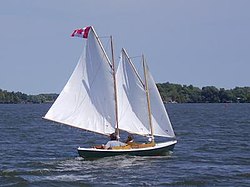KZW, As with any setup, get out there and experiment. You might find that for your particular setup, wind and sea conditions, everything that was said here is crap. Maybe not. Maybe (probably) someplace in between.
I'd offer that the approach should be that you go out, sail the boat so that it's comfortable and reasonably fast, and note what you did. As Clay said, you can't gauge the heel as a governing factor - it's one of many inputs to the equation.
I'd offer that the approach should be that you go out, sail the boat so that it's comfortable and reasonably fast, and note what you did. As Clay said, you can't gauge the heel as a governing factor - it's one of many inputs to the equation.



